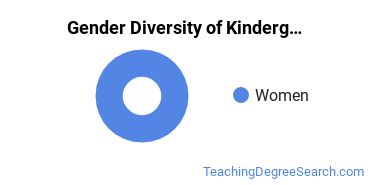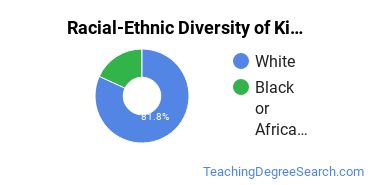Kindergarten/Preschool Education & Teaching at University of Minnesota - Twin Cities
UMN Twin Cities is located in Minneapolis, Minnesota and has a total student population of 52,017.
Want to know more about the career opportunities in this field? Check out the Careers in Kindergarten/Preschool Education & Teaching section at the bottom of this page.
UMN Twin Cities Kindergarten/Preschool Education & Teaching Degrees Available
- Master’s Degree in Kindergarten/Preschool Education and Teaching
UMN Twin Cities Kindergarten/Preschool Education & Teaching Rankings
Kindergarten/Preschool Education and Teaching Student Demographics at UMN Twin Cities
Take a look at the following statistics related to the make-up of the kindergarten/preschool education and teaching majors at University of Minnesota - Twin Cities.
UMN Twin Cities Kindergarten/Preschool Education & Teaching Master’s Program

The following table and chart show the race/ethnicity for students who recently graduated from University of Minnesota - Twin Cities with a master's in kindergarten/preschool education and teaching.

| Race/Ethnicity | Number of Students |
|---|---|
| Asian | 0 |
| Black or African American | 0 |
| Hispanic or Latino | 0 |
| White | 0 |
| International Students | 1 |
| Other Races/Ethnicities | 0 |
Related Majors
- Online Educator/Online Teaching
- Adult & Continuing Education
- Early Childhood Education
- Elementary Education
- Teacher Development & Methodology
Careers That Kindergarten/Preschool Education and Teaching Grads May Go Into
A degree in kindergarten/preschool education and teaching can lead to the following careers. Since job numbers and average salaries can vary by geographic location, we have only included the numbers for MN, the home state for University of Minnesota - Twin Cities.
| Occupation | Jobs in MN | Average Salary in MN |
|---|---|---|
| Preschool Teachers | 8,180 | $37,500 |
| Kindergarten Teachers | 3,440 | $60,580 |
References
*The racial-ethnic minorities count is calculated by taking the total number of students and subtracting white students, international students, and students whose race/ethnicity was unknown. This number is then divided by the total number of students at the school to obtain the racial-ethnic minorities percentage.
- College Factual
- National Center for Education Statistics
- O*NET Online
- Image Credit: By AlexiusHoratius under License
More about our data sources and methodologies.
